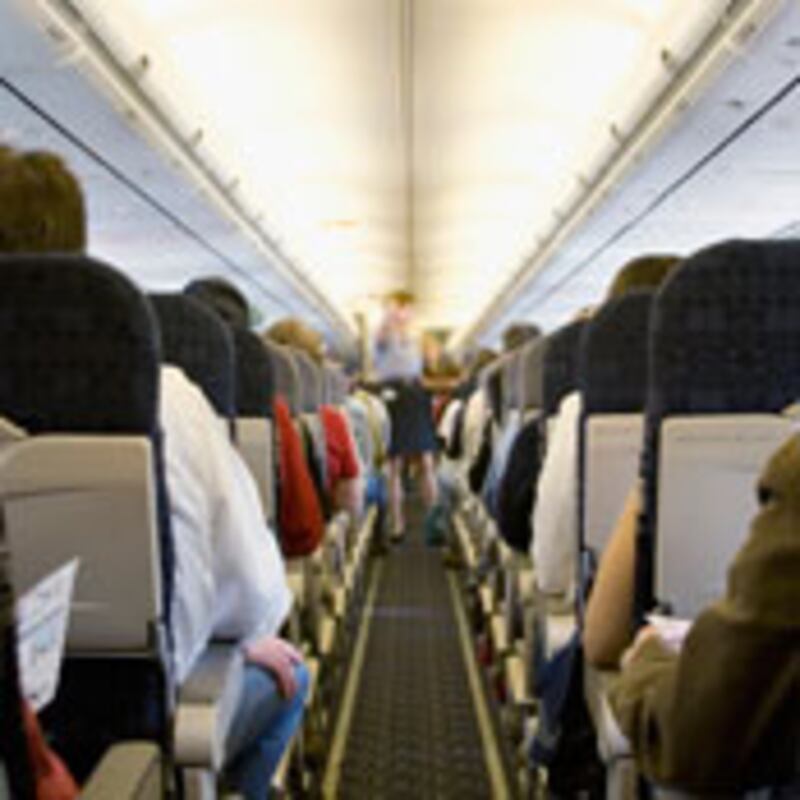
Behind the statistics of airline safety records, what are the things to look for?
First, reputation.
AirTran, topping the ratings for domestic carriers, is a textbook case of turning around a brand with a bad reputation. Until 1997 the airline was called ValuJet, known for old planes and cheap tickets. In 1996, 111 people died when a ValuJet DC9 crashed into the Florida Everglades, as a result of a fire ignited by oxygen cylinders placed (illegally) in a cargo bay. Since then the airline’s fleet of DC9s has been replaced by Boeing 717s (descended from the DC9 but far more sophisticated) and Boeing 737s. Air Tran built its new market by being a budget airline for business travellers—it has just equipped its fleet with WiFi.
When it comes to safety, a little-known but essential detail can be not the age of an airliner but the age of its design. They are not the same thing.
Then there is Southwest Airlines (number three) a case of a well-earned good reputation that has been dented. Southwest pioneered budget city-to-city air travel, and in the process transformed passenger expectations for service, safety and value—and, at the same time, transformed the worldwide airline business model. The blot on Southwest’s record is maintenance. Last year it was handed a fine of $10.2 million for flying Boeing 737s without fixing cracks in the fuselage, as mandated. Southwest then cancelled a plan to outsource maintenance to El Salvador.
After staying out of the Northeast’s main city markets since its birth in 1967, Southwest is now flying from New York and Boston, to compete with Jet Blue, its most accomplished budget rival.
When it comes to safety, a little-known but essential detail can be not the age of an airliner but the age of its design. They are not the same thing.
The most salient example of this is the Boeing 737 (exclusively flown by Southwest and ubiquitous throughout U.S. domestic routes). The 737 got a new lease of life with what are called the NG models—New Generation. The wings and horizontal stabilizers and avionics are indeed all new, but the fuselage is essentially the same one that was designed in the 1950s for the first Boeing jetliner, the 707.
Sitting in a 737 you are in a structure built with the technology of that time, in which sections are riveted together.
In contrast, the 737’s great rival, the Airbus A320, represents 1980s technology. Its fuselage is built differently and laser-welded for strength. So what?
Look at two crashes.
Last December a Continental 737 taking off from Denver aborted at the last second and, in icy conditions, skidded into a ravine. Thirty eight passengers were injured. The 737’s fuselage broke apart behind the wings, a failure typical of a design of that age.
Now look at the Miracle on the Hudson. The Airbus A320 hit the water at around 160 mph, a considerable impact. The fuselage remained in one piece, everybody got out. I doubt very much that would have been true in the case of a 737. Add to that the ability of the A320’s fly-by-wire controls to give Captain Sully Sullenberger a stable attitude on very little backup power and the Airbus technology is proved to be a real life saver.
But the most ominous safety issue of the moment shows Airbus in a different light.
Who would anticipate that a device invented in the 18th century would fall under suspicion for a major crash?
In 1732, one Henri Pitot was taking scientific measurements of the flow of the Seine. He came up with a breakthrough idea in the field of fluid dynamics, with a device that became known as the Pitot tube. With it, accurate measures could be taken of the speed of water currents. In the 20th century the pitot tube was adapted to become the key instrument in measuring the air speed of planes. And, it would be reasonable to assume, nobody need ever worry about such a venerable instrument being reliable.
That has changed with the disappearance of Air France Flight 447 into the deep Atlantic in June. With recovery of the black boxes now all but impossible, the existing evidence points to faulty pitot tubes having played a part. Specifically, those made by the European aerospace company Thales.
All operators of A330s have been told to remove pitot tubes made by Thales and replace them with tubes made by the American company Goodrich. Goodrich is struggling to meet the demand. Incredibly, the problem with the pitot tubes has been known for at least two years.
What is the connection with Flight 447? It is likely that the Air France A330 was getting false speed readings, due to icing, while passing through extremely unstable air. As I have reported earlier for The Daily Beast, that could have been a fatal combination that the pilots were unable to recover from.
Both Airbus and the French safety authorities, the BEA, have been unaccountably tardy in, at first, acknowledging the flawed equipment and then re-equipping the whole A330 fleet. The same goes for the FAA. Despite the fact that the National Transportation Safety Board has been getting a flurry of new reports of problems with A330 pitot tubes, the FAA sits on its hands.
Clive Irving is senior consulting editor at Condé Nast Traveler, specializing in aviation.






